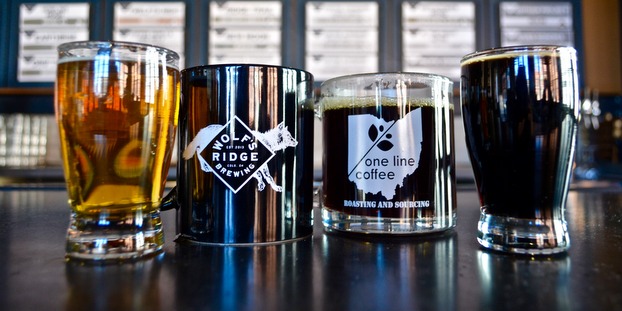
Through my experiments with coffee beer combinations, I’ve come to compare coffee beans to hops. Depending on the hop, you can expect more or less bitterness and oil content and a range of flavors from catty, earthy, herbal, piney, tropical fruit and beyond. The flavors and aromas in coffee beans are just as varied, if not more so: green pepper, spicy, vanilla, caramel, nutty, chocolate, roasty, burnt, red wine, currant, raspberry, blueberry (my favorite!) and even things like shortcake and lemonade.
As with hops, I love experimenting with the variations and sophistication of coffee to elicit ever-more daring and compelling qualities in my beer. At Wolf’s Ridge Brewing, we recently held our third coffee and beer pairing with local coffee roaster One Line Coffee. To date, we’ve used their coffee in over two dozen beers and combinations, held three dedicated coffee events and presented our methodology for infusing coffee into beer at the 2015 GABF.
The premise of our most recent event was to both educate on and experiment with how the coarseness and brewing method of coffee — not just the roast type — can affect the taste of the beer. I’ve almost exclusively used whole bean infusions for my coffee beers, but I wanted to see exactly how much the grind could influence the taste.
We infused our Gold Standard Helles Lager with coffee four ways: whole bean, coarse-crushed, finely ground and Kyoto-style cold brewed. We then paired each infusion with a fresh cup of the coffee used in that infusion, by way of a tableside pour-over. The results were surprising and enlightening — truly the best kind of science (and brewing). Below are some notes on my impressions of each infusion method.
RELATED: Treat coffee beans like hops: An innovative approach from Wolf’s Ridge Brewing
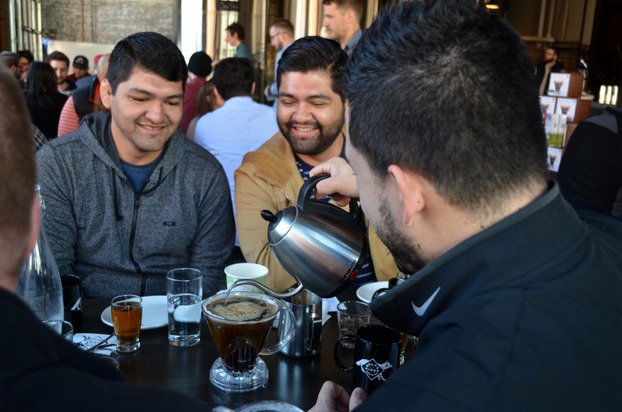
Whole Bean
Kenya Giakanja
This is the method I’m most familiar with, and I expected it to be my clear favorite. The whole bean infusion seemed to showcase the base beer the best — the Helles Lager largely still drank like a Helles Lager and retained enough of the original flavor and aroma to let you know what it was. Whole beans yielded the most smooth and oily coffee character of the bunch, with prominent notes of caramel, toffee, chocolate and vanilla from the coffee. This one drank the lightest and, in my opinion, was the most refreshing.
Appearance: Crystal clear, no color change
Coarse Crush
Congo Sopacdi
This was my least favorite of the bunch, but surprisingly, the first keg to kick after the event ended. Many guests preferred this method, though I’m not positive if it’s due to the actual difference in flavor or the fact that it had that “coffee beer” taste most have come to recognize. It was certainly the most intense of the four methods and the aroma was off-the-charts coffee-forward. Deep roasted notes prevailed, as did a green pepper character.
My guess is that by crushing the bean, you free up more of the positive flavor and aroma compounds, but also wind up freeing some of the negative ones that don’t present in an uncrushed bean.
Appearance: Somewhat cloudy with a brown tint to it, a pickup of roughly 4-6 SRM.
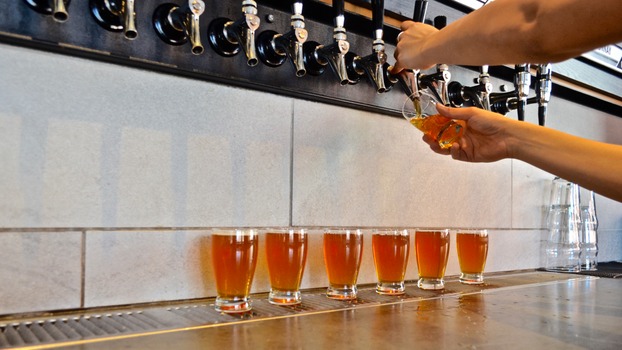
Fine Ground
Burundi Bwayi Ngoma
This was the true surprise for me. I actually found this method to be much smoother and easier to drink than the coarsely crushed version. As with the coarse crush, the coffee aroma was more intense than in the whole bean version. Roast and chocolate prevailed with that hint of green pepper mentioned earlier. I also found this version to have the largest increase in bitterness of the four options.
Appearance: Cloudy (just slightly more than the coarse), with a pickup of 5-8 SRM. Not much darker than coarse, surprisingly.
Cold Brewed
Colombia San Pascual
This appeared to be our guests’ least favorite option, but I personally found it interesting. In this case, we simply added 64 ounces of cold brewed coffee directly to the beer. The aroma was identical to the coffee itself. Intensity was similar to the fine ground but the flavor was much smoother and more balanced. There was a hint of dry oakiness that appears in cold brewed coffees, and it finished mildly sweet. I was much more impressed with the cold brewed variant than I expected to be and see it as a viable option for adding a stable coffee flavor to your beer.
Appearance: Slight haze and roughly the same color as the fine ground.
Takeaways
I expected to dislike at least one of the coffee variations; however, they were all enjoyable in their own way. Whole bean was solidified as my favorite, but I realized it doesn’t provide the same intensity of aroma and flavor as crushed does. In the future, I might dabble in blending whole and crushed beans to layer different flavors and aromas.
Cold brew is nice because the coffee character will not intensify over time, but there are drawbacks. Unless you heat to pasteurization temperature, you’re potentially adding a non-sterile liquid to your beer, as well as additional water content. This, in large enough quantities, might thin out your beer, and if it’s already carbonated, it might decrease the CO2 levels unless you compensate for it.
Note: Pay attention to steep time. We used 6 ounces in a 1/6 barrel (bbl) of beer for each infusion and had almost too intense of a character from the crushed kegs after two days. If you plan to do this at home or in your own brewery, wait until you have the means and time available to move the beer off the coffee the moment it tastes great to you. Waiting too long will only add harshness, bitterness and intensity to the product.
Overall, every method seems to have its perks and drawbacks. There are certainly other methods I haven’t personally explored yet that seem to work for others. As always, I advocate experimenting for yourself.
For our next coffee event with One Line on May 15 [Editor’s Note: Sorry for our delay in posting. We are the worst] I think we’ll remove the science for once and focus on creating some really fun and interesting beers. I’m planning on offering Dire Wolf Imperial Stout infused with coffee five ways, potentially including coconut, Mexican spiced, cherry vanilla and rum versions. Then, I’ll be back at it trying to discover all new ways to expand our usage of the mighty coffee bean.
This awesome feature was provided by Chris Davison, Head Brewer at Wolf’s Ridge Brewing located in Columbus, Ohio. … O-H!

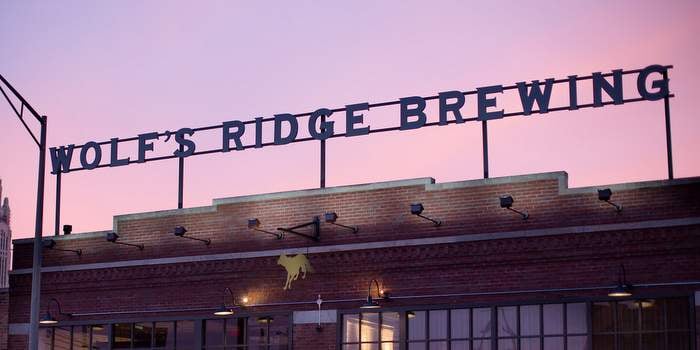
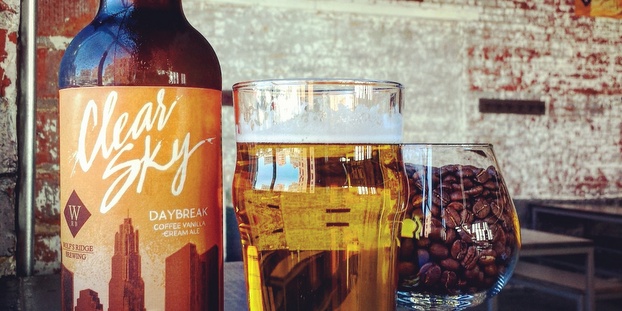
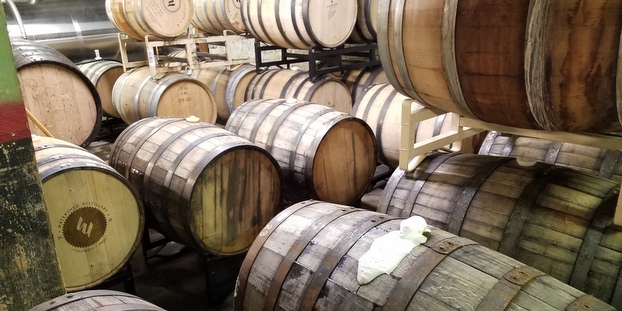
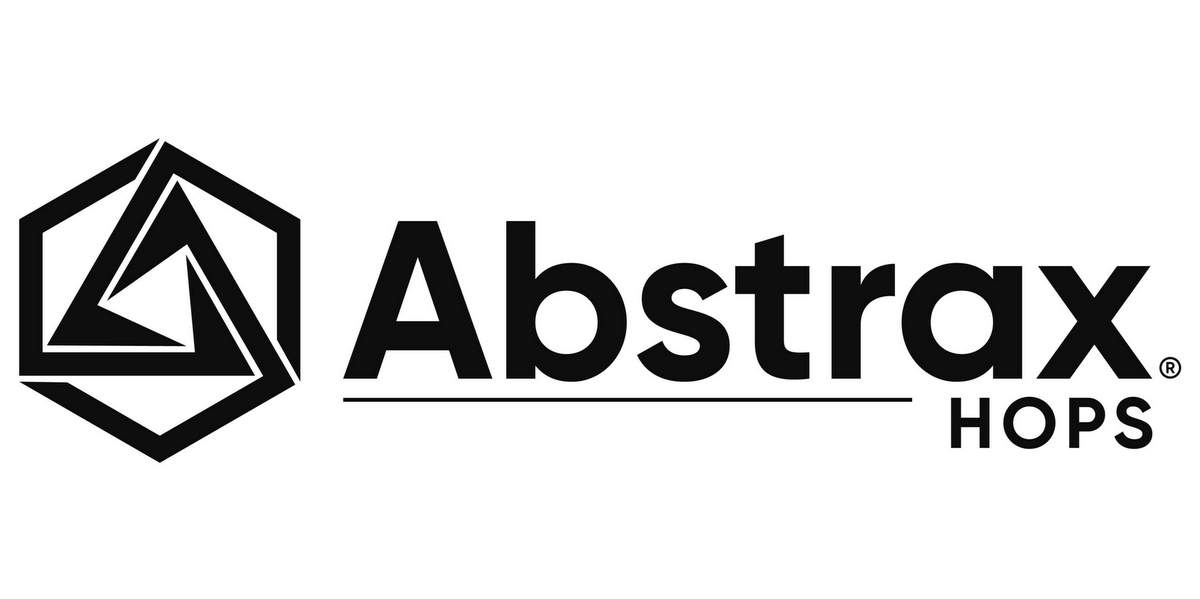
Hong Jinho liked this on Facebook.
Fred Searles liked this on Facebook.
Adam Holtvogt liked this on Facebook.
Beth Demmon Ivey liked this on Facebook.
RT @CraftBrewingBiz: Experiment: How will a coffee bean’s grind effect its flavor in your beer? https://t.co/7Rw1Y8b17h @WolfsRidgeBrew